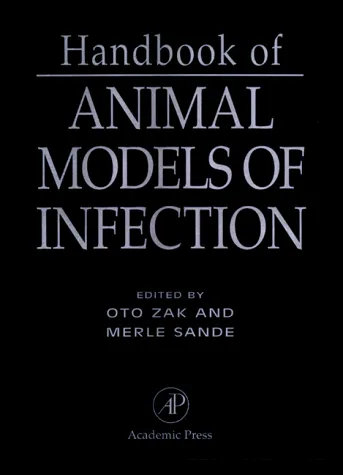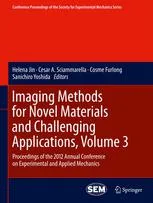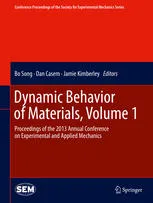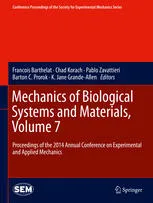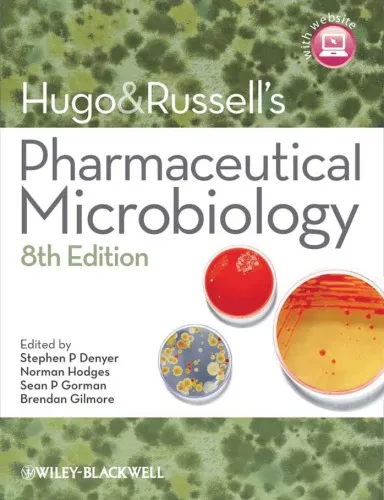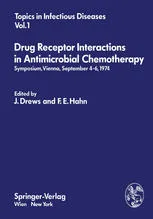Handbook of Animal Models of Infection: Experimental Models in Antimicrobial Chemotherapy
4.0
بر اساس نظر کاربران

شما میتونید سوالاتتون در باره کتاب رو از هوش مصنوعیش بعد از ورود بپرسید
هر دانلود یا پرسش از هوش مصنوعی 2 امتیاز لازم دارد، برای بدست آوردن امتیاز رایگان، به صفحه ی راهنمای امتیازات سر بزنید و یک سری کار ارزشمند انجام بدینکتاب های مرتبط:
معرفی کتاب 'Handbook of Animal Models of Infection: Experimental Models in Antimicrobial Chemotherapy'
کتاب 'Handbook of Animal Models of Infection: Experimental Models in Antimicrobial Chemotherapy' یکی از منابع جامع و مرجعی در زمینه بررسی مدلهای حیوانی عفونت و مطالعات در شیمیدرمانی ضد میکروبی است. این کتاب که توسط نویسندگان معتبر و متخصصی از جمله Merle A. Sande و تیمی از پژوهشگران برجسته نوشته شده، با هدف ارائه راهنمای جامع به پژوهشگران، پزشکان و دانشجویان در زمینه طراحی دقیق و استفاده از مدلهای حیوانی تدوین شده است.
این کتاب ارزشمند به طور خاص بر نحوه شبیهسازی بیماریهای انسان در مدلهای حیوانی تمرکز دارد و به بررسی فرآیندهای پیچیده عفونت، مکانیسمهای مؤثر در درمان و ارزیابی اثرات داروهای جدید میپردازد. در این کتاب، ابزارها و تکنیکهای مدرن بهکار رفته در تحقیقات ضد میکروبی و همچنین پیشرفتهای اخیر در این حوزه مورد بحث قرار میگیرد.
خلاصه کتاب
کتاب 'Handbook of Animal Models of Infection' دربرگیرنده چندین فصل تخصصی است که طراحی و مدیریت آزمایشها در مدلهای حیوانی را با جزئیات تشریح مینماید. از موضوعات کلیدی مطرح در کتاب میتوان به موارد زیر اشاره کرد:
- توصیف دقیق انواع مدلهای حیوانی و کاربردهای آنها در تحقیقات عفونت
- چگونگی ارزیابی کارایی داروهای ضد میکروبی جدید
- نقش حیاتی مدلهای پیشبالینی در پژوهشهای پزشکی
- تأکید بر استفاده از تکنیکهای استاندارد برای کاهش خطاهای آزمایشگاهی
این کتاب نه تنها به توصیف روششناسی میپردازد، بلکه توصیههای مفیدی برای طراحی مطالعات بر مبنای اهداف علمی خاص ارائه میدهد.
نکات کلیدی
کتاب 'Handbook of Animal Models of Infection' نکات کلیدی متعددی را برای پژوهشگران فراهم میآورد که میتوانند در آزمایشگاه و تحقیقات خود به کار بگیرند. برخی از این نکات به شرح زیر است:
- اهمیت انتخاب دقیق گونههای حیوانی برای هر نوع عفونت خاص
- مدیریت متغیرهای زیستی و غیرزیستی در طراحی آزمایشها
- تکنیکهای پیشرفته برای بررسی نحوه تعامل میزبان و پاتوژن
- ارزیابی فرآیندهای ایمنی و شیمیدرمانی در محیطهای کنترلشده
این نکات علمی، محققان را در بهینهسازی مطالعات خود و پیشرفت در حوزه پزشکی و درمان هدایت میکند.
نقلقولهای معروف از کتاب
"The use of animal models remains critical for understanding infection dynamics and for the successful transition of experimental therapies to clinical applications."
"Standardization is the cornerstone of reproducibility in preclinical infection models."
چرا این کتاب اهمیت دارد؟
کتاب 'Handbook of Animal Models of Infection' به دلایلی متعدد از اهمیت ویژهای برخوردار است. از جمله:
- پوشش کامل و جامع موضوعات مربوط به عفونتسازی و شیمیدرمانی در مدلهای حیوانی
- تأمین منابع و اطلاعاتی بر پایه تحقیقات علمی برای پژوهشگران و کادر پزشکی
- توضیح فناوریها و دستاوردهای روز برای بهبود درمانهای ضد میکروبی
- ترویج اخلاق در پژوهش و استفاده بهینه از مدلهای حیوانی
این کتاب با ارائه بینشی عمیق در مورد استفاده از مدلهای پیشبالینی، به نوآوری در روشهای درمانی و گسترش دانش بشر در زمینه بیماریهای عفونی کمک شایانی میکند.
Introduction to the Handbook of Animal Models of Infection: Experimental Models in Antimicrobial Chemotherapy
The "Handbook of Animal Models of Infection" is a comprehensive guide for researchers, clinicians, and scientists in the field of microbiology and infectious diseases. This book provides a detailed examination of experimental models using animals to study antimicrobial chemotherapy, offering valuable insights into infection dynamics, drug efficacy, and host-pathogen interactions. It is an essential resource for anyone working on developing novel therapeutic interventions to combat infectious diseases.
Detailed Summary of the Book
In the fight against infectious diseases, the use of animal models is indispensable for understanding how pathogens behave in living organisms and how potential therapies perform under in vivo conditions. This book explores these animal models in great detail, organizing its content to cater to scientific professionals and academic researchers alike. The text balances scientific rigor with accessibility, covering a wide range of microbial infections caused by bacteria, viruses, fungi, and parasites. Each chapter delves into a specific infection model and provides a thorough methodology, discussing the merits and limitations of each model.
The book is structured to guide readers from foundational principles, like selecting appropriate animal species and establishing infectious doses, to nuanced topics, such as ethical considerations and advancements in alternative methods to reduce reliance on animal testing. Discussions include small rodents like mice and rats, as well as larger animals like non-human primates, depending on the disease being studied.
Additionally, this handbook emphasizes its practical utility by focusing on preclinical evaluation of new therapeutic agents. Readers gain insights into how experimental outcomes can be translated into real-world clinical treatments. Topics such as pharmacokinetics, drug resistance, and the role of host immunity are explored with the depth required to understand their implications for human health.
Key Takeaways
- Comprehensive coverage of infection models for a wide range of pathogens, including bacteria, viruses, fungi, and parasites.
- Detailed methodologies for experimental infections and antimicrobial testing in animal models.
- A thorough discussion of the advantages, limitations, and ethical considerations of using animal models.
- Insights into drug development, including pharmacokinetics studies and investigating potential drug resistance.
- Focus on translational research with a goal of bridging experimental findings and clinical applications.
Famous Quotes from the Book
"Animal models of infection are not mere tools, but windows into the complex interplay between pathogens and the host environment."
"The success of antimicrobial chemotherapy relies on bridging the gaps between the laboratory, the animal model, and the clinical setting."
"Ethics and science are intertwined; the humane treatment of animal test subjects upholds the integrity of research."
Why This Book Matters
Despite advances in molecular biology and computational modeling, animal studies remain a cornerstone of infectious disease research. The "Handbook of Animal Models of Infection" serves as a pivotal resource for researchers investigating the mechanisms of infection, immunity, and antimicrobial efficacy. With the increasing threat of antibiotic resistance and emerging pathogens, the need for reliable and ethically sound preclinical models has never been more pressing.
What sets this book apart is its ability to provide actionable knowledge for scientists at every stage of their careers. It addresses not only scientific and technical aspects but also navigates pressing issues like reducing reliance on animal testing by introducing alternative methods where possible.
Ultimately, this book exemplifies the scientific community's commitment to advancing global health while maintaining ethical standards. It is an invaluable reference for laboratories, pharmaceutical companies, and academic institutions worldwide, ensuring that the development of therapies for infectious diseases is driven by robust, reproducible, and compassionate research methods.
Whether you are a microbiologist, a pharmaceutical researcher, or simply curious about the intricacies of antimicrobial development, this handbook offers a wealth of knowledge that underscores the importance of translational science in modern medicine. It is both a guide and a call to action for the scientific community to push the boundaries of understanding while adhering to the highest ethical standards.
دانلود رایگان مستقیم
شما میتونید سوالاتتون در باره کتاب رو از هوش مصنوعیش بعد از ورود بپرسید
دسترسی به کتابها از طریق پلتفرمهای قانونی و کتابخانههای عمومی نه تنها از حقوق نویسندگان و ناشران حمایت میکند، بلکه به پایداری فرهنگ کتابخوانی نیز کمک میرساند. پیش از دانلود، لحظهای به بررسی این گزینهها فکر کنید.
این کتاب رو در پلتفرم های دیگه ببینید
WorldCat به شما کمک میکنه تا کتاب ها رو در کتابخانه های سراسر دنیا پیدا کنید
امتیازها، نظرات تخصصی و صحبت ها درباره کتاب را در Goodreads ببینید
کتابهای کمیاب یا دست دوم را در AbeBooks پیدا کنید و بخرید
1263
بازدید4.0
امتیاز0
نظر98%
رضایتنظرات:
4.0
بر اساس 0 نظر کاربران
Questions & Answers
Ask questions about this book or help others by answering
No questions yet. Be the first to ask!
